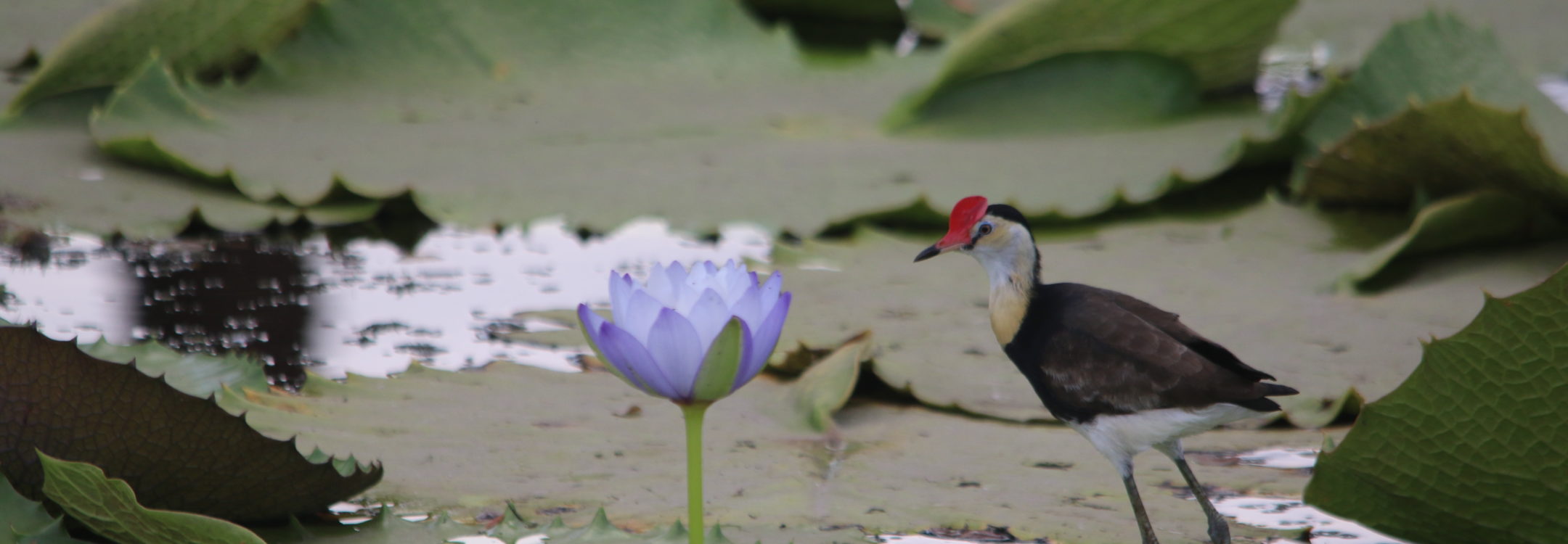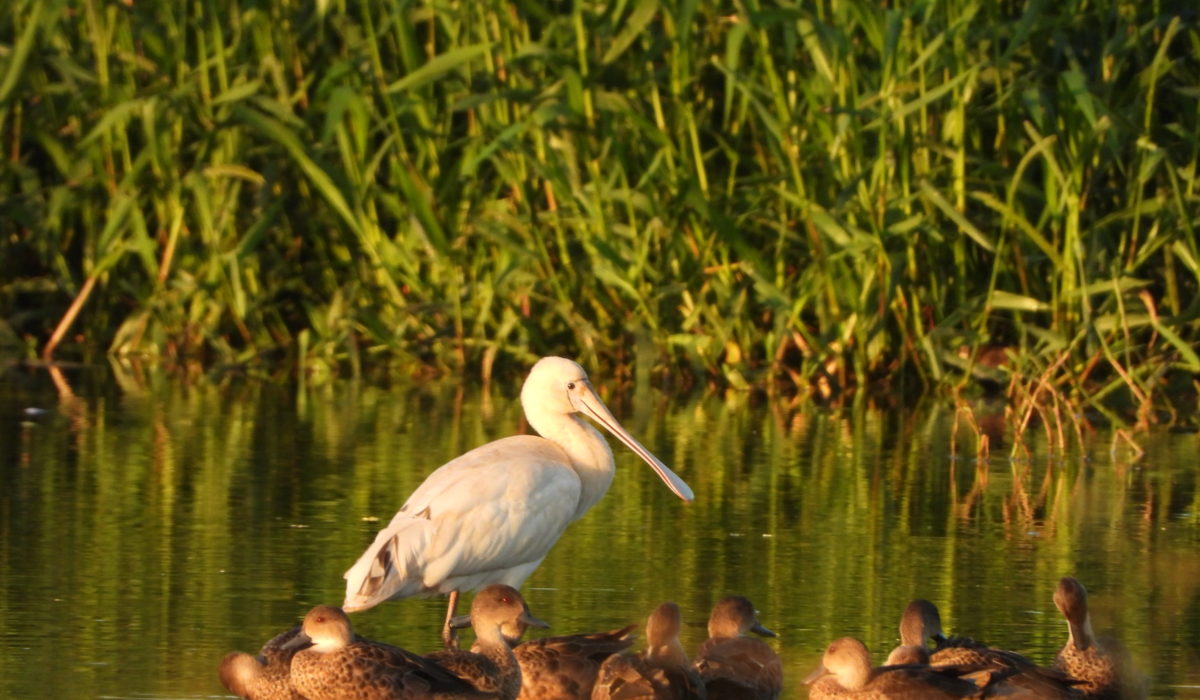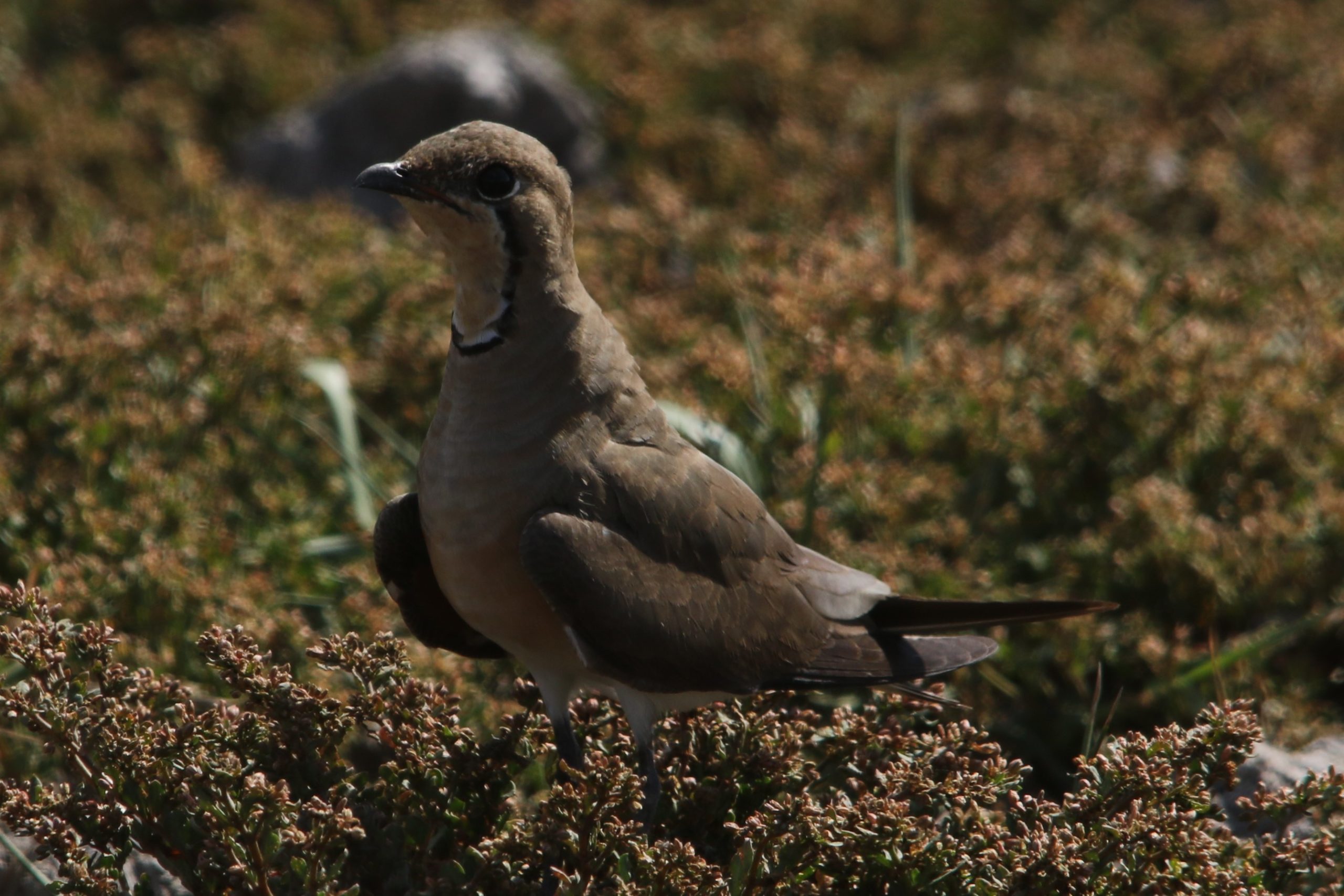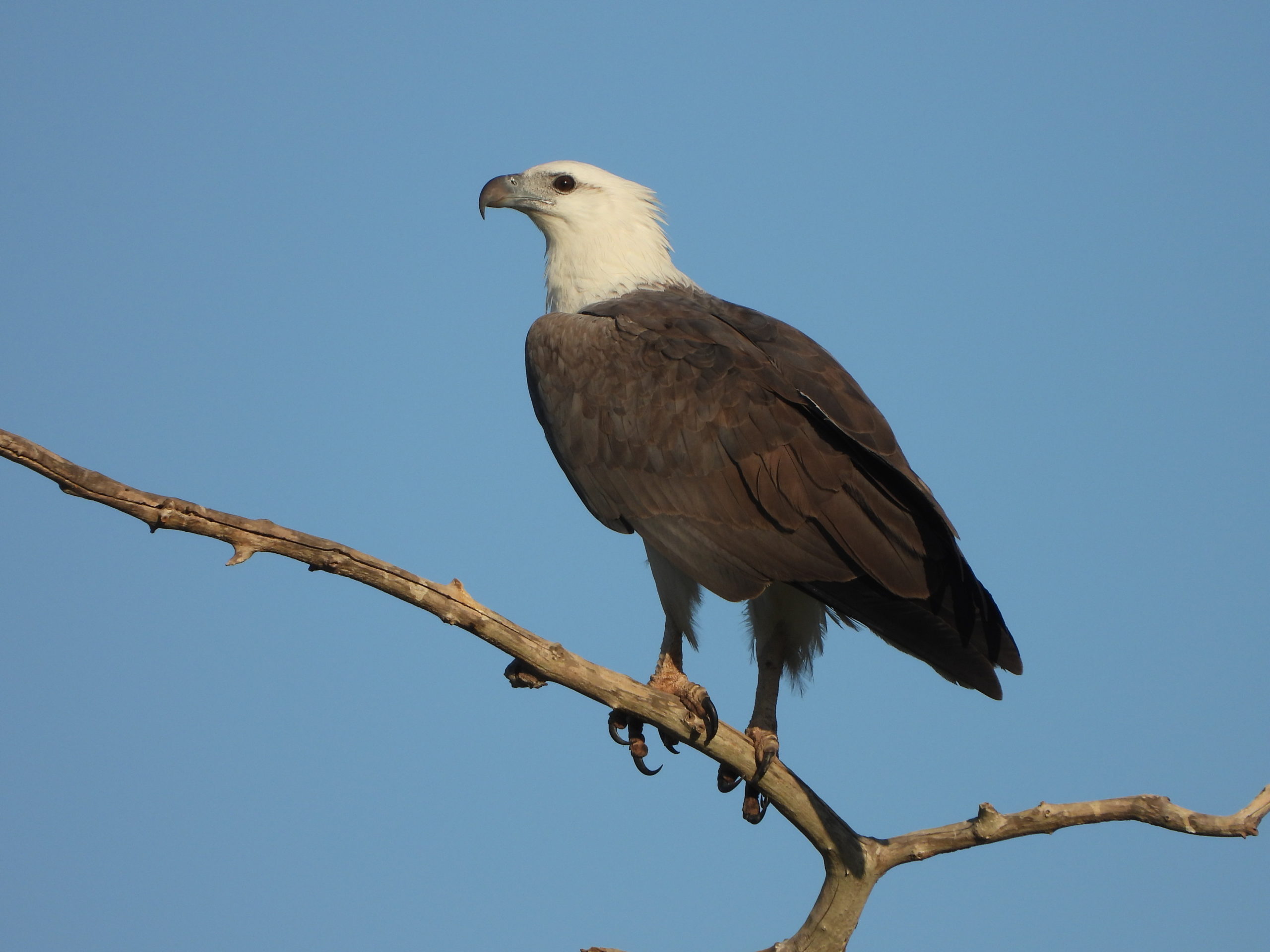Sought-after birds include migrants such as the Barn Swallow (perched on wires near the homestead in some years), Eastern Yellow Wagtail (most years), Oriental Plover, Oriental Pratincole and Little Curlew, all of which can appear from late October into the early wet season. Spotted Whistling-Ducks were first seen in 2018 and are now a breeding resident. A Painted Snipe stayed for more than a month in 2020.
On the grassy plains, Australian Bustards are resident, and Brolgas and Australian Pratincoles are present in the dry season from July-December. Red-backed and occasionally Red-chested Button-quails burst from cover in these areas.
Crimson Finches live in the camping ground area and nest in some of the buildings, while White-browed Crakes are common in the nearby creek (but don’t get too close to the bank, stay behind the fence!).





 Facebook
Facebook Instagram
Instagram